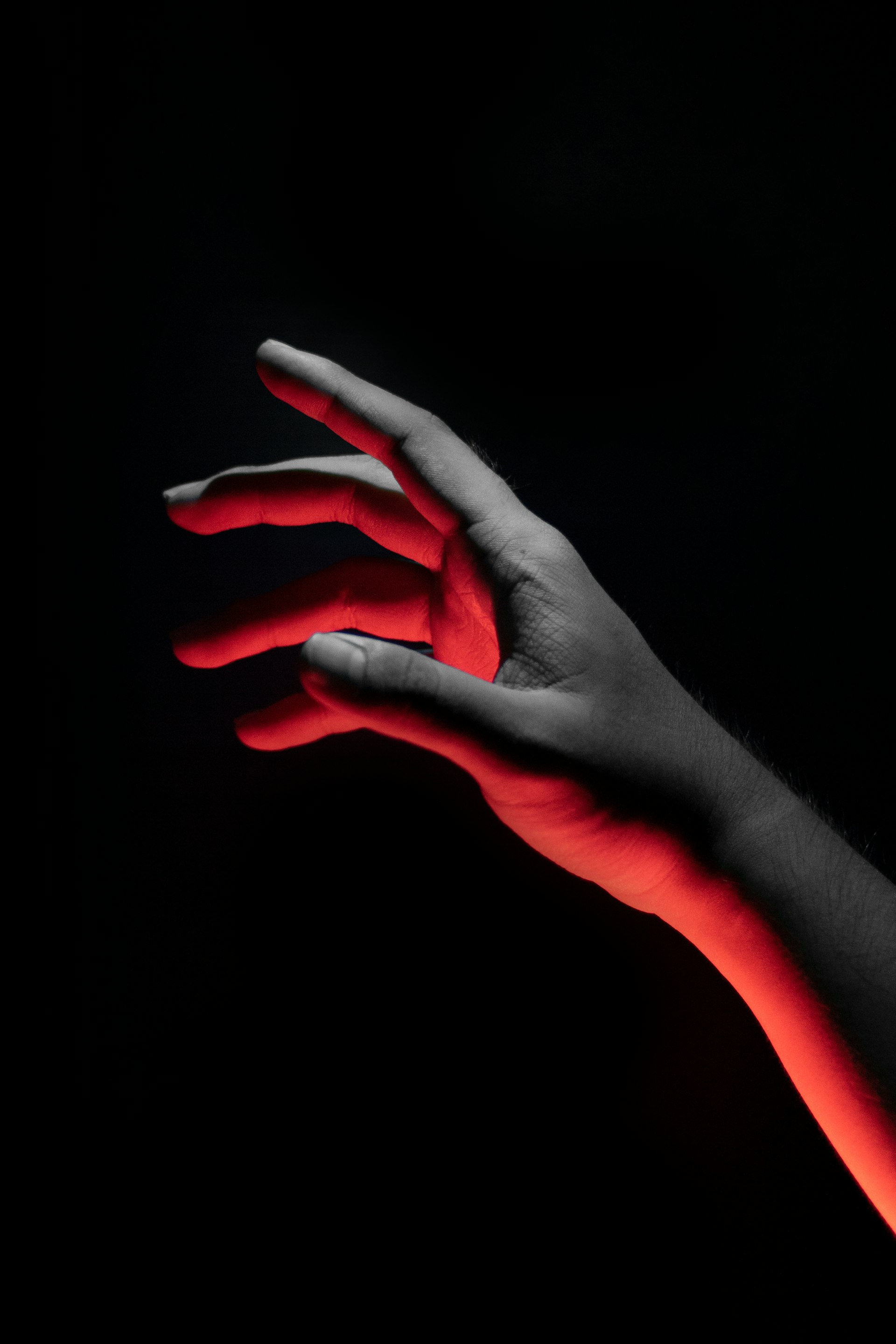Following the narrow, filthy alley lightened by old incandescent light, we are embraced by the very heart of Sonagachi, Kolkata, one of the largest red-light districts. However, instead of filming the sex workers standing in the line, waiting for customers to come, the lenses in the documentary, Born into Brothels were pointing at the offspring of such women. Their laughers, footsteps and entire childhood are accompanied by the dark, dirty streets, the heavily powdered prostitutes, and drunk, ragged men.
It is always easy for people to conclude that, for these kids, there is no hope in their future - without proper education and some decent parents' guidance, girls will unquestionably end up "in the lines" while the others face the similar situation of being marginalised in the society. They are the victims of this district, their families and most importantly, their mothers' profession, and they need the ultimate saviours to pull themselves out of the brothels.
That is what the makers of Born into Brothelsdid. Of course, they needed to portray an eye-catching villain to the audience before they could boast of the feat of rescue. The result is the conflict between parents and their kids being fuelled with intense artificial drama. Zana Briski's interactions with kids happened under the calming daytime, shot using conventional documentary techniques - steady framing, proper lighting on everyone's faces, and centring the main speaker at the time, catching their expressions loyally. Their surroundings were not posh in any means but still well-organised. However, when it was at night, the visual of this exact neighbourhood changed dramatically - the image of the sex workers was grainy and shaky, sometimes out of focus with dropping frames. Seeing some blurry faces and hard makeup, the audience would be some passers-by unaware of the sex trade, yet the representation itself, through mysterious pictures and exotic background tracks, reflects the inherent moral critics toward prostitution, creating a sharp contrast to the kids' bright adventures. With the addition of some clips showing the daily quarrels, the impression of abusive parents and suffering kids was well-established. Nevertheless, it cannot stand beyond the scope of filming techniques, when most kids did not have an issue staying with their parents, as they relied on their families as much as their families needed them. At the end of the film, upon the kids' departure for boarding schools, the sincere tie between them and their families could not be buried using cinematic measures.
In contrast, another film, Tales of the Night Fairies, is franker and more straightforward in its portrayal of parent-child relationships. The kids were not the sole victims of the undesirable surroundings, and the parents were not the bad guy creating all this tragedy. Sex workers would use the following lines to describe their positions in their families.
I am the mainstay of my family. My money buys medicines for my mother and my brother's schoolbooks. My body gets drenched with rain, as I become an umbrella, with black clouds over my head. Under my protection, my family lives happily.
Though Born into Brothels never mentioned the kids' education status explicitly, the audiences could derive from scattered details that the kids were, in fact, receiving a public education provided by the government. Apart from that, they were provided housing and food by their families, particularly the sex workers in their families. However, the contribution was largely overlooked by the producer of the film, leaving the audience with an inaccurate "bad guy" image, allied with the stereotype impression of “fallen women”.
You... You... All of you... You have done me many favours in literature, in poetry, in rituals. You have worshipped me as Mother, celebrated me as Nature. Then, having painted my lips, you left me on the streets as the "fallen" woman.
Their stories, or experiences, were primarily a consequence of patriarchy, including sexual objectification. However, it is not the cliché "flighting back the oppressor" in the Western content; the women were willing to be objectified, at least partially. They accept the fact that for some men, the sole purpose of a housewife is to be used as a tool for sexual satisfaction, in the cost of food and housing, that their bodies are used in this seemingly fair trade. Therefore, the idea that sex workers are doing the same job as housewives, except for the different trade partners, is adopted. Furthermore, they require their dignity to be protected during the trade process – and they have established their organisation to voice out their demands to the greater public, to fight back the institutional discrimination imposed on them.
One crucial thing cannot be overlooked. In the community, the responsibilities of raising the children in a family fall on the female parents' shoulders. Housewives trade with husbands for food, clothes, and a place to stay for their children, while sex workers trade with customers for the money used in the same categories. The role of a decent father is overwhelmingly absent in these narratives, causing the situation to worsen.
Tales of the Night Fairies intentionally guided the logic chain toward these structure problems, hinting that the underlying source of unsatisfying living conditions was the violence against the prostitution, not the prostitution itself, and the voice from the workers in the field matters when we were discussing the problems and the possible solutions.
In Born into Brothels, however, the notion of "Kids with Cameras", which turned out to be the name of charity founded later (and vanished from public sight), is crucial. Zana Briski chose to skip her work as the representation of the neighbourhood and use the following voice-over narration at the beginning of the film in defence of her self-effacement.
It’s almost impossible to photograph in the Red Light district. Everyone is terrified of the camera. They’re frightened of being found out. Everything’s illegal . . . I knew I couldn’t do it as a visitor— I wanted to stay with them, and understand their lives. And of course, as soon as I entered the brothels, I met the children. The brothels are filled with children, they’re everywhere. And they were so curious; they didn’t understand why this woman had come and what I was doing there. They were all over me, and I would play with them, and take their photographs, and they would take mine. They wanted to learn how to use the camera. That’s when I thought it would be really great to teach them, and to see this world through their eyes.
It was the first time that these kids got cameras in their hands. Furthermore, for the first minutes, the audiences saw the brothels through kids' unbiased eyes, but not for long. Approximately halfway through the film, Briski admits that the nature of her intervention in the children's lives has evolved from simply teaching them the elements of photography to establishing an infrastructure for them to instrumentalise their photographs to ensure their economic futures. Hence, instead of free art exploration, the kids took shots meant to be printed on postcards, shown in grand galleries, or exhibited at the conference in Amsterdam, in short, selected in favour of the market. This selection was blended in the practical and aesthetic lessons they received, collaborated with their emotional projections of the district, and fruited into the exotic image of "real India", a form of taught self-orientalism. According to Praveen Swami, an Indian journalist, the movie should be criticised for exploiting the children for the purposes of Indophobic propaganda in the West, while in Steven Lukes' opinion, the whole process could be categorised as the third-dimension power enforced on the unknowing kids.
Born into Brothels depicted a heroic white rescuer who saves helpless children from the dark, chaotic brothels and backward parents bent on petting them to work before appropriate age. The superficial portrayals of their struggles and the seemingly unsustainable funding raising scheme made it more an emotional reality show than a thorough documentary. Tales of the Night Fairies, on the contrary, showed us the sex workers' action for equal rights in the name of DMSC, Durbar Mahila Samanwaya Committee, and improve their families' lives under the constrain that India is, after all, a developing place. We do not see outsiders rushing in and saving them out of a burning hell in this film - the victims are the rescuers of themselves.
All things considered, we are left with a simple fact. Kids with Cameras, the much-anticipated NGO established by the people behind the lens in Born into Brothels, was in a long silence, while DMSC, the committee of some 65,000 sex workers, keeps growing bigger and contributing to the improvement of the lives of sex workers and their families, till today.
Reference
Briski, Z., Briski, Z., Kauffman, R., Kauffman, R., & Kauffman, R. (2004). Born into brothels: Calcutta's Red Light Kids. Retrieved October 18, 2021.
Brouillette, S. (2011). Human Rights Markets and Born into Brothels. Third Text, 25(2), 169–176. https://doi.org/10.1080/09528822.2011.560631
Durbar Mahila Samanwaya Committee. (2013). An organisation of sex workers fighting for rights and dignity. DURBAR. Retrieved October 18, 2021, from https://durbar.org/.
Kleinman, A., & Kleinman, J. (1996). Cultural Appropriations of Suffering in Our Times. Social Suffering, 125(1), 1–23. https://doi.org/10.2307/j.ctt183p6n7.28
Lukes, S. (2005). Power: A radical view. Palgrave Macmillan.
Said, E. W. (2004). In Orientalism. introduction, Vintage Books.
Shohini Ghosh. (2003). Tales of the Night Fairies. Retrieved October 18, 2021, from http://www.bayswan.org/swfest/tales.html.
Swami, P. (2005, April 21). A missionary enterprise. Frontline. Retrieved October 18, 2021, from https://frontline.thehindu.com/arts-and-culture/cinema/article30204258.ece#
This essay was written as the midterm paper for "Political Violence and Human Rights".

